#qadjar
Explore tagged Tumblr posts
Text







Marseille. A la Vieille-Charité, une expo "Panoramas" faisant le tour de la variété des musées de la ville (d'où cet aspect disparate, mais très plaisant)
reliquaire d'ibis - Tounah-el-Gebel - Epoque Ptolémaïque
Utagawa Hiroshige - "Les 53 relais du Tôkaidô ; le 44ème relais, Yokkachi"
Roger Broders - "Marseille, Porte de l'Afrique du Nord"
Utagawa Hiroshige - "Les 53 relais du Tôkaidô ; le 18ème relais, Okitsu"
Pierre Puget - "Vaisseaux dans la rade de Marseille"
Utagawa Hiroshige - "Les 53 relais du Tôkaidô ; les 2ème relais, Odawara"
bouclier de "ta'zieh", théâtre religieux d'époque Qadjar - Iran, XIXe s.
#marseille#vieille charité#panoramas#arcéologie#égypte#égypte antique#ibis#momie#reliquaire#tounah-el-gebel#ptolémaïque#utagawa hiroshige#tokaido#yokkachi#okitsu#odawara#roger broders#art déco#pierre puget#baroqe#bouclier#ta'zieh#qadjar#perse#iran
8 notes
·
View notes
Text
Arts-Music .. an A to Z
A Brainstorm Chat Dedicated Essentially For Giving Humble Insights and Joy to Kill the Loneliness you May Notice On this Period and Quench your Reading and Singing's Thirst Using Virtues of soothingWords like a Xylophone than can make You sleep Zzzzz…
A capella:
A cappella is a phrase used in vocal music indicating that a song or part of a song, in one or more voices. It is also the name of a chant performed without instrumental accompaniment. It is a pure, authentic and a rudimentary yet very soothing type of chant.
Blues:
The blues is a musical, vocal and instrumental genre derived from the working songs of the African-American populations undergoing racial segregation in the United States. The blues first appeared in the southern United States during the 19th century. It is a style where the singer expresses his sadness and his disappointments.
Country music:
Country music is a mixture of traditional music developed mainly in the southeast of the United States and in the maritime provinces of Canada, but also in Europe as in Ireland or in the north of the Netherlands. Country music evolved rapidly in the 1920s and remains very popular today. Different gender variations have also emerged in other countries such as Australia.
Dada:
The Dada movement is an intellectual, literary and artistic movement from the beginning of the 20th century, which is characterized by a questioning of all ideological, aesthetic and political conventions and constraints.
Existentialism:
Existentialism is a philosophical and literary current which considers that the human being forms the essence of his life by his own actions, these not being predetermined by theological, philosophical or moral doctrines.
Funk:
Funk is characterized by the predominance of the rhythm section (guitar, bass, drums) which plays syncopated patterns, the frequent presence of brass or saxophones on rhythmic punctuations (riffs) or solos and, in general, by the great place given to instruments. It has emerged from a mix of soul and jazz music.
Gnawa:
Gnawa music is a body of Moroccan and other North African Islamic religious songs and rhythms. Its well-preserved heritage combines ritual poetry with traditional music and dancing. The music is performed at "lila", communal nights of celebration dedicated to prayer and healing guided by the Gnawa maalem, or master musician, and their group of musicians and dancers.
Humanism:
Humanism is an idealist and optimistic current of thought which places Man at the center of the world, and honors human values. It has shaped many facets of the contemporary world.
Impressionism:
This pictorial movement is mainly characterized by small paintings, visible brush strokes, open composition, the use of unusual viewing angles, a tendency to note fleeting impressions, the mobility of climatic and light phenomena, rather that the stable and conceptual aspect of things, and to transfer them directly to the canvas. Claude Monet and Paul Cézanne are notorious members and founders of the impressionist movement
Jazz:
Jazz is a music genre that originated in the African-American communities of New Orleans, United States. It originated in the late 19th and early 20th centuries, and developed from roots in blues and ragtime. Jazz is seen by many as "America's classical music".
Karaoke
Karaoke (カ ラ オ ケ, karaoke) Is an entertaining way to sing, usually by following the lyrics on a screen.
Liberalism
Liberalism is based on freedom and recognition of the individual, its initial purpose is to rationalize and order social relations.
Metal
Heavy metal (or Metal) is characterized by the dominance of the guitar and the drums, as well as a powerful rhythm. It draws its influences from rock, classical music and the blues.
Naturalism
Naturalism is a literary movement which, in the last decades of the 19th century, sought to introduce into the novels the method of the human and social sciences, applied to medicine by Claude Bernard. Émile Zola is the main representative of this literary school in France. The movement will spread throughout Europe to America.
Opera
An opera is a musical and theatrical work for an orchestra and singers, built on a libretto which depicts characters and their history, where the roles are sung. Opera is one of the lyrical forms of Western musical theater.
Pop
Pop music (or simply pop) is a musical genre that appeared in the 1960s in the United Kingdom and the United States. These songs usually talk about love or relationships between women and men.
Qajar Art
Kadjar art (or qadjar) is an art form that developed in Kadjar Iran, which lasted from 1794 to 1925. The period during which the Kadjar dynasty reigned experienced a strong development of the arts, made possible by a period of relative stability in the country's history, allowing artistic development especially under the reigns of Fath Ali Chah Qadjar.
Rock
It has its roots in rock 'n' roll of the 1940s and 1950s, itself greatly influenced by rhythm and blues and country. Rock has also incorporated elements from other genres including folk, blues, jazz and classical music.
Symbolism
For the symbolists, the world cannot be limited to a concrete appearance that can be reduced to rational knowledge. There is a mystery to be deciphered in the correspondences which strike inanity the partitioning of the senses: sounds, colors, visions participate in the same intuition which makes the Poet a kind of mage
Techno
Techno is a genre of electronic music that emerged in the United States in the mid-1980s. Most often composed in home studio and reinterpreted by disc jockeys during festive practices, techno is above all dance music, in essence repetitive
Ukiyo-e Ukiyo-e (浮世 絵?, Japanese term meaning “image of the floating world”) is a Japanese artistic movement from the Edo period (1603-1868) comprising not only an original popular and narrative painting, but also and above all Japanese woodcut prints.
Vocal Jazz
Vocal jazz is a sub-genre of jazz, where the voice predominates within the composition. It is thus frequently opposed to instrumental jazz, where the playing of musicians predominates.
Waila
Chicken scratch (also known as waila music) is a kind of dance music developed by the Tohono O'odham people. The genre evolved out of acoustic fiddle bands in southern Arizona, in the Sonoran desert. These bands began playing European and Mexican tunes, in styles that include the polka, schottisch and mazurka
Xote
Xote – is a Brazilian music genre and dance for pairs or groups of four.
YéYé
Yé-yé was a style of pop music that emerged from Southern Europe in the early 1960s. The term "yé-yé" was derived from the English term "yeah! yeah!"
Zadjal
Zadjal adapts well to music. It reached its peak with Ibn Quzman, Andalusian poet adapted from Cordoba, who used it for his panegyrics, but also to sing nature, wine and especially love.
Aymane Moataz, El Mehdi El Bachiri.
2 notes
·
View notes
Photo

Borj-O-Morgh #bob_far #Tehran #borj_o_morgh #oiseaux_et_tour #qadjar #qajar #gol_o_morgh #milad_tower #borj #borj_e_milad #bird_and_tower #oiseaux #tour #bird #tower #iran #iraniancontemporaryart #art_photo #art #art_photograpghy (at Majnoon Cafe)
#tehran#bob_far#oiseaux#bird#gol_o_morgh#tower#borj_e_milad#art_photo#oiseaux_et_tour#borj_o_morgh#qajar#qadjar#milad_tower#borj#tour#iran#iraniancontemporaryart#art#bird_and_tower#art_photograpghy
0 notes
Text



Le jardin de Shahzadeh (Iran) a été conçu et aménagé en 1850 pour le prince Qadjar Mohammad Hassan Khan Qadjar Sardari Iravani et agrandi en 1873. Restauré en 1991 après un tremblement de terre. il est classé au patrimoine mondial de l'UNESCO.
2 notes
·
View notes
Photo
"Ce qui pourrait passer pour une simple ressortie de l’été est en fait une œuvre miraculée, comme il arrive parfois au cinéma d’en régurgiter. L’Echiquier du vent (Shatranj-e baad) est le premier long-métrage de Mohammad Reza Aslani, artiste pluridisciplinaire comme on les trouve en Iran, né en 1943, formé aux Arts décoratifs de Téhéran, poète réformateur, tête pensante de la télévision nationale, et, pour couronner le tout, cinéaste. Ce coup d’essai n’a été projeté qu’une fois, en 1976 au Festival international de Téhéran, où il fut froidement accueilli. En 1979, le régime islamique en place scelle son sort en le frappant d’interdiction.
Réputé perdu pendant près de quarante ans, le film ressurgit par l’un de ces hasards qui laissent pantois. Aslani (*sa fille) en retrouve les négatifs dans une brocante, les acquiert et les place en lieu sûr. Intégré au programme de préservation de la Film Foundation, le film restauré retrouve son lustre et se révèle une pièce maîtresse, jetant un nouveau jour sur le cinéma iranien d’avant la révolution.
Que L’Echiquier du vent ait été interdit désole mais ne surprend pas. On croit parfois avoir la berlue devant cette œuvre au noir, vénéneuse et torpide, qui dépeint la déliquescence d’une famille aux dernières heures de la dynastie Qadjar (1796-1925), dans les années 1920[...]" (article du monde à l'occasion de sa re-sortie en salle)
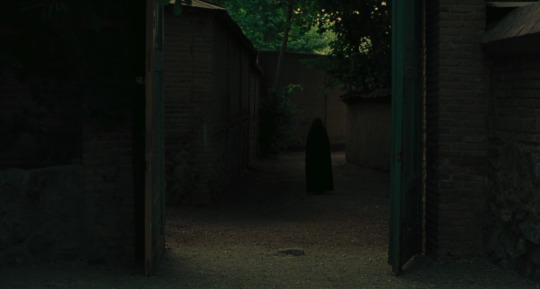
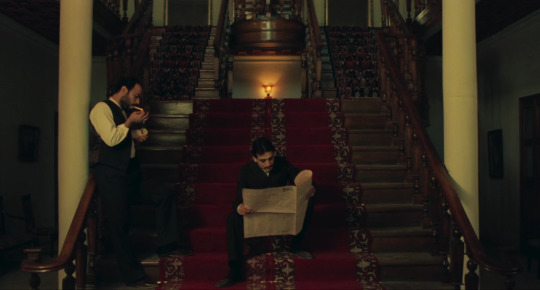

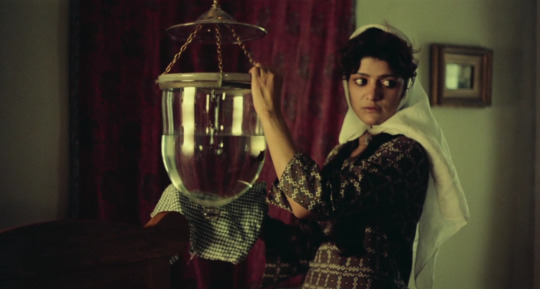
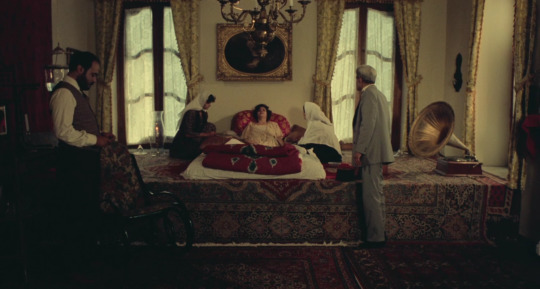
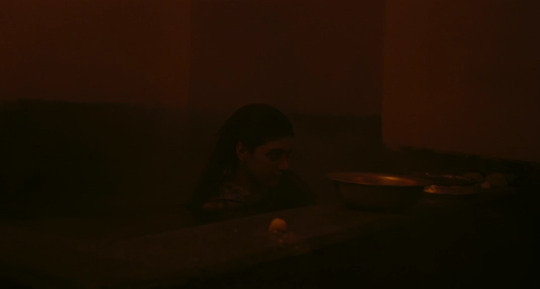
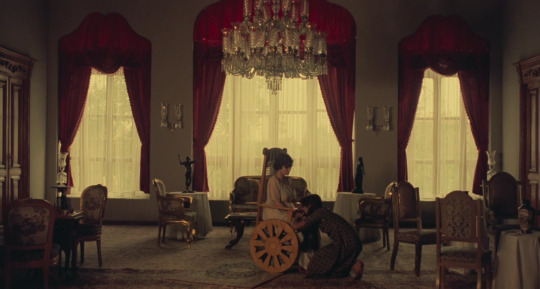

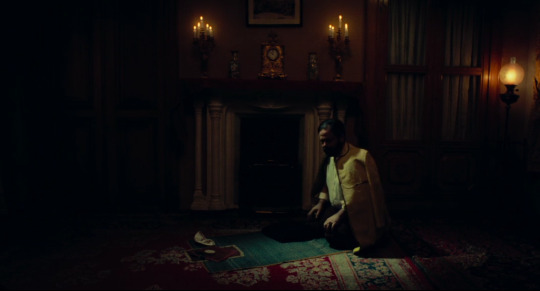
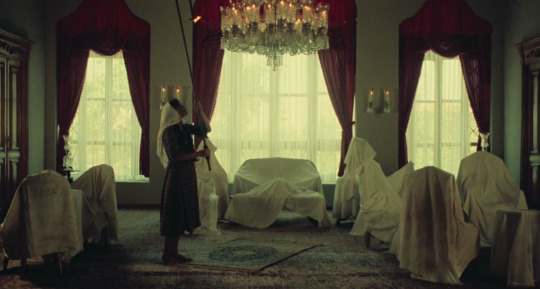
The Chess Game of the Wind (Mohammad Reza Aslani, 1976)
236 notes
·
View notes
Photo

2019 : Centre historique de Sheki avec le palais du Khan. Azerbaïdjan
La ville historique de Sheki est située au pied de la chaîne du Grand Caucase et divisée en deux par la rivière Gurjana. Tandis que la partie nord, plus ancienne, est bâtie sur la montagne, sa partie sud s’étend dans la vallée fluviale. Son centre historique, reconstruit après la destruction d’une ville antérieure par des coulées de boue au XVIIIe siècle, se caractérise par un ensemble architectural traditionnel de maisons à hauts toits en bâtière. Située le long d’importantes routes commerciales historiques, la ville possède une architecture influencée par les traditions de construction issues des règnes safavide, qadjar et russe. Le palais du Khan, au nord-est de la ville, ainsi que les diverses maisons de marchands, reflètent la richesse générée par l’élevage des vers à soie et le commerce des cocons de la fin du XVIIIe siècle au XIXe siècle.
0 notes
Text






Marseille. A la Vieille-Charité, une expo "Panoramas" faisant le tour de la variété des musées de la ville (d'où cet aspect disparate, mais très plaisant)
Dominique Louis Ferréol Papety - "Italiens"
collection Jeanne Lanvin, 1988
idem
Théodore Deck : Vase bouteille 1861 ; "Shirin au bain" avec le prince Kushraw, Iran, époque Qadjar, mi XIXe s.
Mathilde Robert - "La Vénitienne"
vase, "Le Christ calmant une tempête" - Marseille, Saint-Jean-du-Désert, 1715
#marseille#vieille-charité#panoramas#doinique papety#papety#italie#jeanne lanvin#mode#fashion#théodore deck#shirin#chirine#iran#qadjar#perse#kushraw#mathide robert#vénitienne#saint-jean-du-désert#faïence#napolitain
4 notes
·
View notes
Photo







Une série sur les aigles, buses et autres grands rapaces diurnes...
Ici, des aigles médiévaux...ou d’apparence médiévale.
- Château de Pierrefonds
- Louvre-Lens, expo “L'Empire des Roses" - pendentif en argent, émail, or et perles - Iran, époque Qadjar, 1830
-Râches, Musée Arkéos - fibules - Hordain, VIème s.
- Mailhat (Auvergne)
-Toulon - Cathédrale Notre-Dame de la Seds
- Madiran
- Château de Pierrefonds
#aigle#rapace#médiéval#château#pierrefonds#néogothique#louvre-lens#expo#l'empire des roses#qadjar#iran#perse#pendentif#râches#arkéos#fibule#nord#hordain#mailhat#auvergne#provence#toulon#notre-dame de la seds#madiran#béarn#vic-bilh
1 note
·
View note
Photo





Guère d’allant ni d’inspiration.
Allez, quelques portraits poilus !
- Villeneuve-d’Ascq - Fernand Léger: “Le Mécanicien”
- Marseille, Vieille Charité - Anne-Louis Girodet: “Portrait de Mustapha”
- Louvre-Lens (expo sur l'ére Qadjar) - Aqa Buzurg: portrait de Mirza Aqa Khan, 25ans (Chiraz, 1868)
- Marseille, musée Cantini - Edouard Manet : “Le Bailarin" (1862)
- Marseille, Musée des Beaux-Arts - Valère Bernard: “Au Soleil”
#portrait#art#peinture#tableau#barbe#moustache#villeneuve-d'ascq#LAM#fernand léger#mécanicien#Marseille#vieille charité#expo#orientalisme#anne-louis girodet#mustapha#louvre-lens#qadjar#l'empire des roses#aqa burzug#mirza aqa khan#chiraz#musée#musée cantini#édouard manet#manet#bailarin#musée des beaux-arts#valère bernard#au soleil
1 note
·
View note
Photo


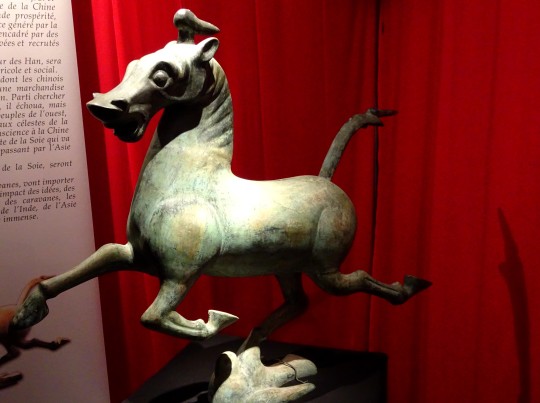
Une très très longue série sur les chevaux. Ici, des chevaux exotiques...Dernier billet équin !
- Paris, Musée Guimet - joueuses de polo - Chine
- Louvre-Lens - Jules Laurens - dessin des faïences du Palais d'Asterabad - Iran, 1848
-Douai, Gayant Expo - Cheval Céleste - Période Han
#cheval#chevaux#équidés#Iran#Perse#qadjar#jules laurens#faïence#asterabad#dessin#barbu#Douai#Chine#Paris#musée#musée guimet#Guimet#polo#han#cheval céleste
3 notes
·
View notes
Photo


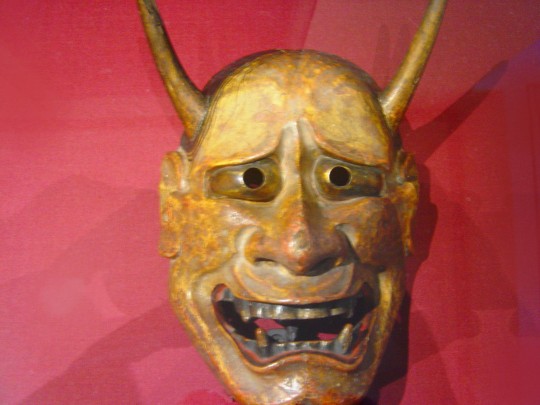


Diable, diable… Bon, une assez longue série sur des Lucifer, des Belzébuth et autres Satan…
- Marseille, Vieille Charité, MAAOA - Mexique
- Louvre-Lens, expo "L'Empire des Roses" - masse d'arme de théâtre représentant un “div” - Iran, XIXe époque Qadjar
- Paris, Musée Guimet
- Paris, Musée de l'Homme - démon chrétien (Papouasie)
- Paris, musée Branly - Shiva-Rudra - Inde
#diable#démon#monstre#Marseille#Vieille Charité#MAAOA#Mexique#masque#Louvre-Lens#musée#l'empire des roses#qadjar#iran#div#Paris#musée guimet#japon#musée de l'homme#papouasie#quai branly#shiva#shiva-rudra#Inde
1 note
·
View note
Photo

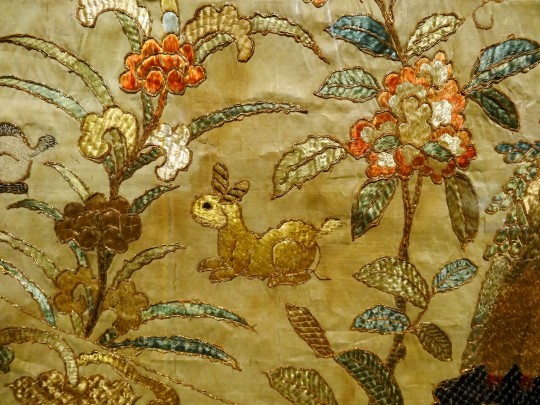
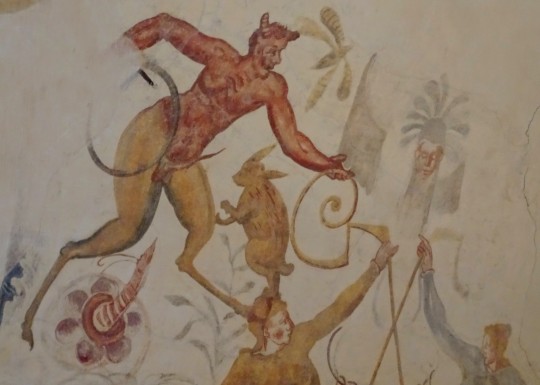
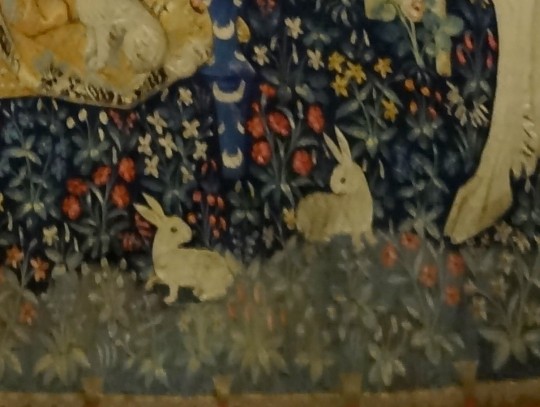
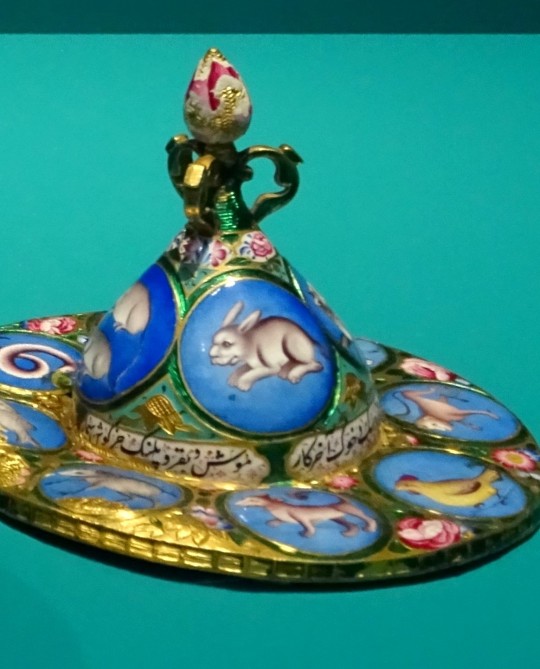

Allez, pour l’année du Lapin, une série de 6 posts !
Ici des lapins médiévaux, Renaissance et classiques
- Arras, Musée des Beaux-Arts - "Saint Vaast apprivoisant l'ours" - Arras, XVe s
- Marseille, MuCEM, expo “Aventuriers des Mers" - chape liturgique en soie - Macao, XVIe s.
- Villeneuve-Lembron (Auvergne)
- Paris, Musée de Cluny - tapisseries - “La Dame à la Licorne”
- Louvre-Lens, expo "L'Empire des Roses" - service à café décor astrologique - Iran qadjar, début XIXe
- Parentignat (Auvergne)
#lapin#année du lapin#arras#musée des beaux-arts#tapisserie#saint vaast#renaissance#médiéval#classique#marseille#MuCEM#aventuriers des mers#chine#soierie#macao#liturgique#auvergne#villeneuve-lembron#Paris#musée de cluny#la dame à la licorne#louvre-lens#iran#perse#qadjar#l'empire des roses#service à café#parentignat
16 notes
·
View notes